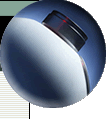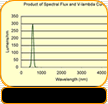FAQs
CAN’T FIND AN ANSWER TO YOUR MEASUREMENT QUESTION ON
THIS PAGE?
PLEASE CONTACT US!
sphere-optics@soptics.com
INTEGRATING SPHERES
1.) How often should I recalibrate my sphere or sphere system?
Answer:
We recommend a period of a minimum of one year between optical
calibrations for systems. Sphere stability is primarily based
on cleanliness (dirt, dust, finger oil) – the nicer
you are to your sphere – the longer it will last.
2.) How often should I recoat my sphere?
Answer:
Coating longevity is almost infinite – when it is not
used. Usage is the prime factor in determining when a recoating
is necessary. If the sphere has chips, cracks, excessive dust,
a yellowish appearance, fingerprints, or burn spots it should
be recoated as soon as possible to ensure continued throughput
accuracy.
3.) How does the size of sphere affect the throughput of
the sphere?
Answer:
The throughput of the sphere is related to the ratio of the
area of the exit port to the area of the sphere, and the surface
area of the sphere is proportional to the square of the diameter.
Therefore if the size of the exit port remains constant, then
doubling the diameter of the sphere will decrease the throughput
by a factor of 4.
4.) If the reflectance of the sphere coating is so flat why
is my throughput so dependant on wavelength?
Answer:
The Zenith® and Optowhite sphere materials have exceptionally
high and very stable reflectance. However, due to the nature
of the sphere’s multiple internal reflections, even
slight variances in reflectance vs. wavelength are augmented.
For instance, if there are an average of 15 bounces for a
ray of light within the sphere, the 99% reflectance is applied
as (99%)^15 = 86% compare to 98% reflectance is applied as
(98%)^15 = 74%. What this is saying is that a 1% difference
in reflectance results in a 12% difference in throughput.
This is why small variations in spectral reflectance cause
large variations in spectral throughput.
5. What is the maximum number of ports I can put in a sphere?
Answer:
As a general “rule of thumb”, the total combined
surface area of the sphere ports should be kept to <5%
of the total sphere surface area.
LUMINANCE/RADIANCE STANDARDS
1.) What is the largest port that the sphere will allow
before uniformity is degraded?
Answer:
If the ratio of the port diameter to the sphere diameter is
1:3 you can expect a uniformity of +/- 1%, if that ratio is
1:4 you can expect a uniformity of +/- 0.5%. In general, the
higher the reflectance of the sphere coating the better the
uniformity, therefore a Zenith® (PTFE) sphere will be more
uniform than a Optowhite (BaSO4) with identical port to sphere
ratios.
LAMP MEASUREMENT
1.) What is an auxiliary correction procedure and why is
it necessary for accurate lamp measurements?
Answer:
When a lamp is placed into an integrating sphere, it absorbs
light even while it is radiating in the Sphere. This absorption
is slightly different for every lamp and is certainly different
for a lamp with a black base (very absorptive) versus a white-based
lamp. An auxiliary lamp corrects for the difference in absorption
characteristics of the reference lamp versus the test lamp.
LASER POWER MEASUREMENT
1.) How do I determine the throughput of my integrating sphere
system for a given input power?
Answer:
Use the following equation to calculate the throughput
of your sphere.

Where is
the ratio of energy falling on or exiting through the area
Aout to the input energy, is
the ratio of energy falling on or exiting through the area
Aout to the input energy,  is
the average reflectance (including ports) of the sphere wall,
the FOV is the field of view, measured in sterradians of the
area Aout . is
the average reflectance (including ports) of the sphere wall,
the FOV is the field of view, measured in sterradians of the
area Aout .
The following equations may be helpful.
Aout = π r2 and Asphere
= 4 π r2 where r is the radius of the output
port or the sphere.
|







